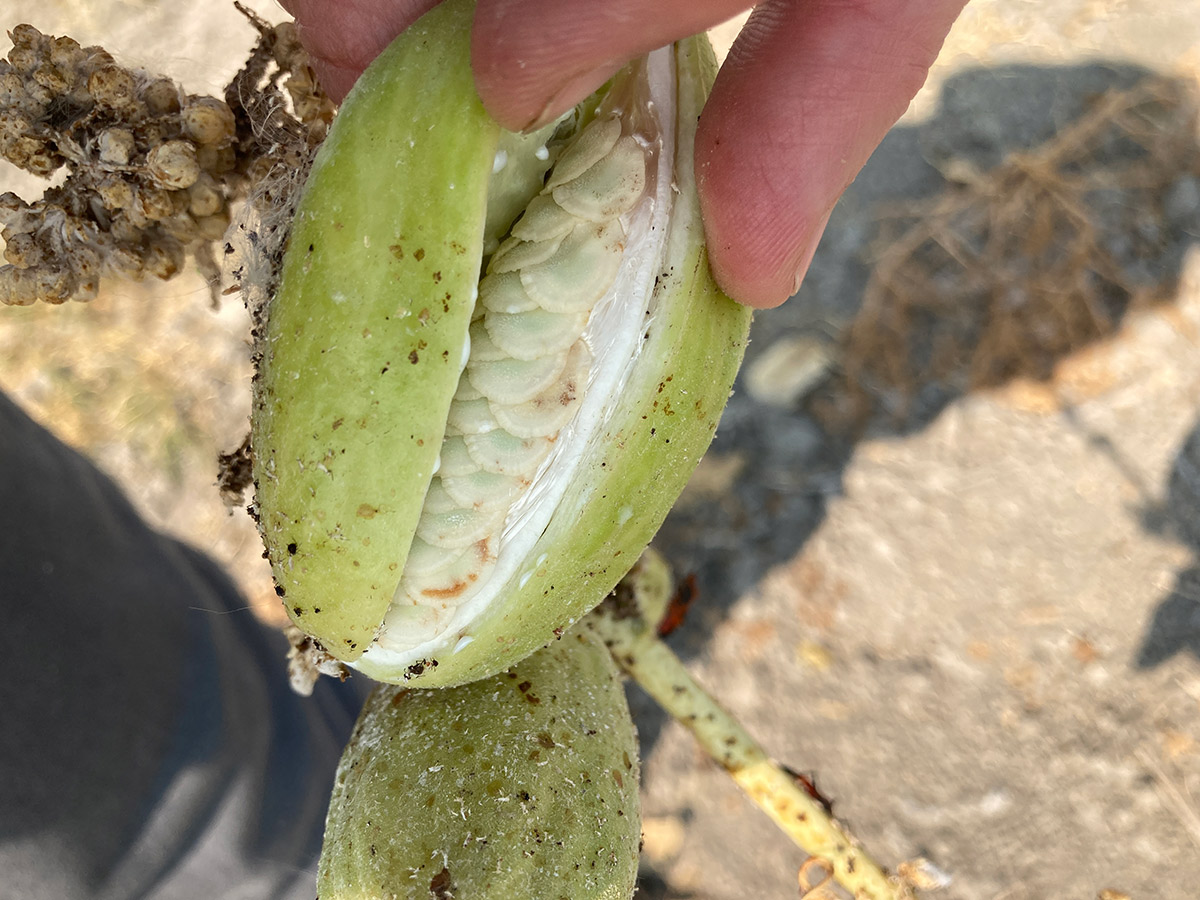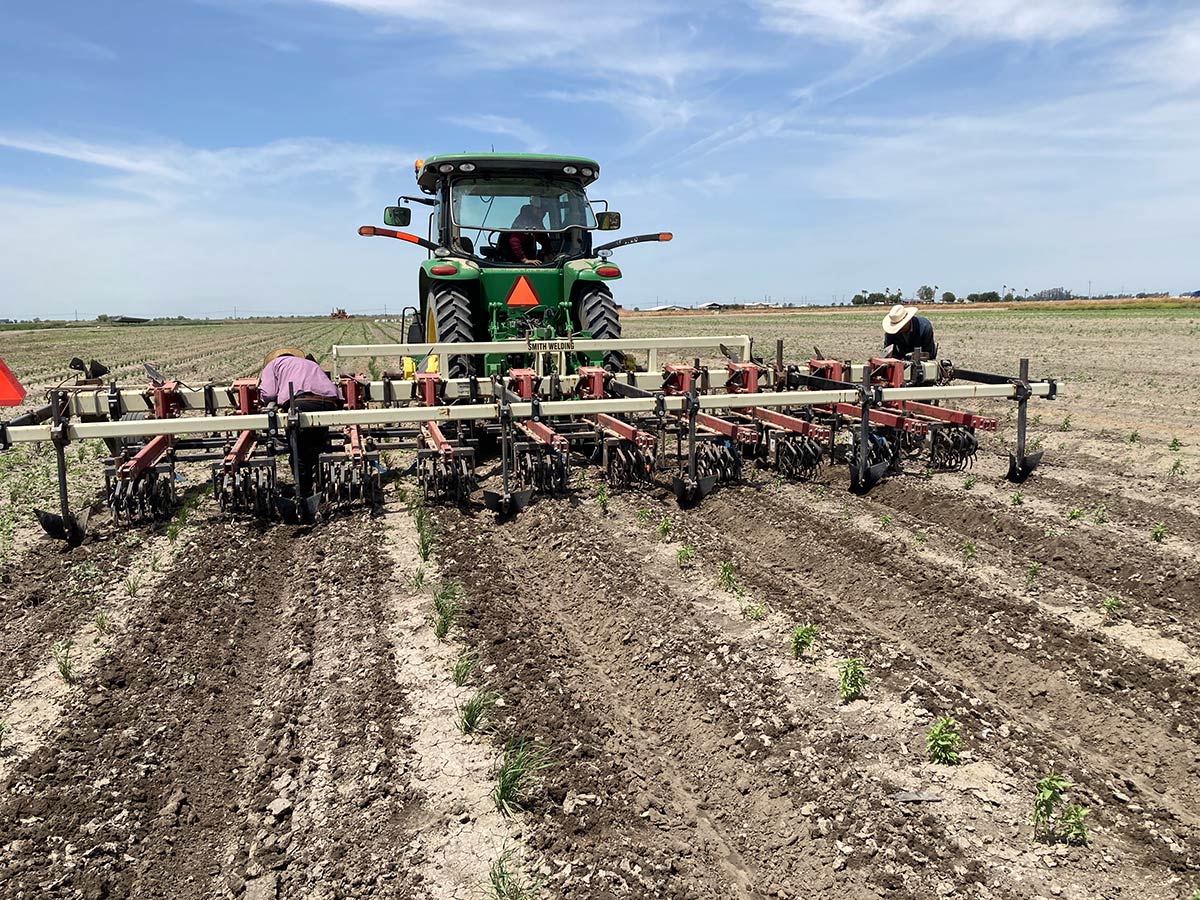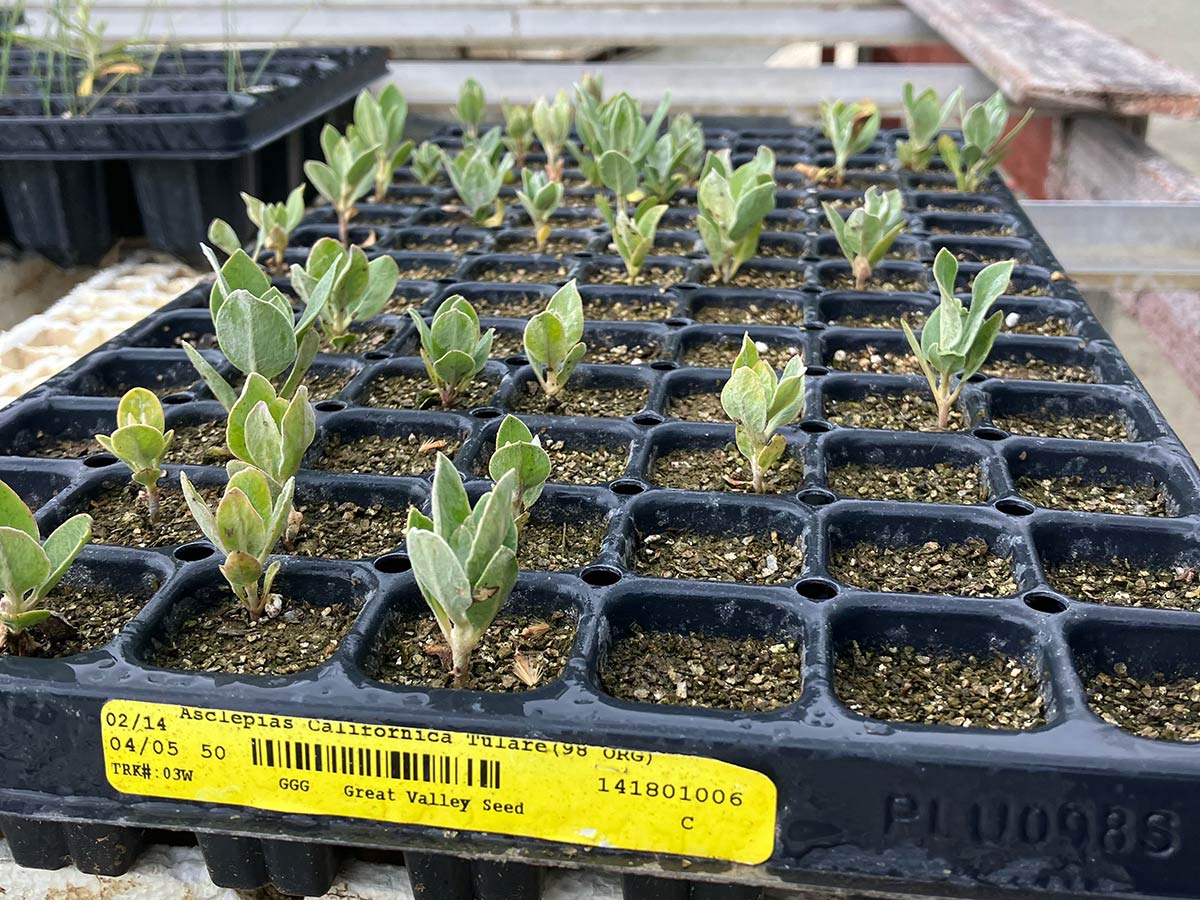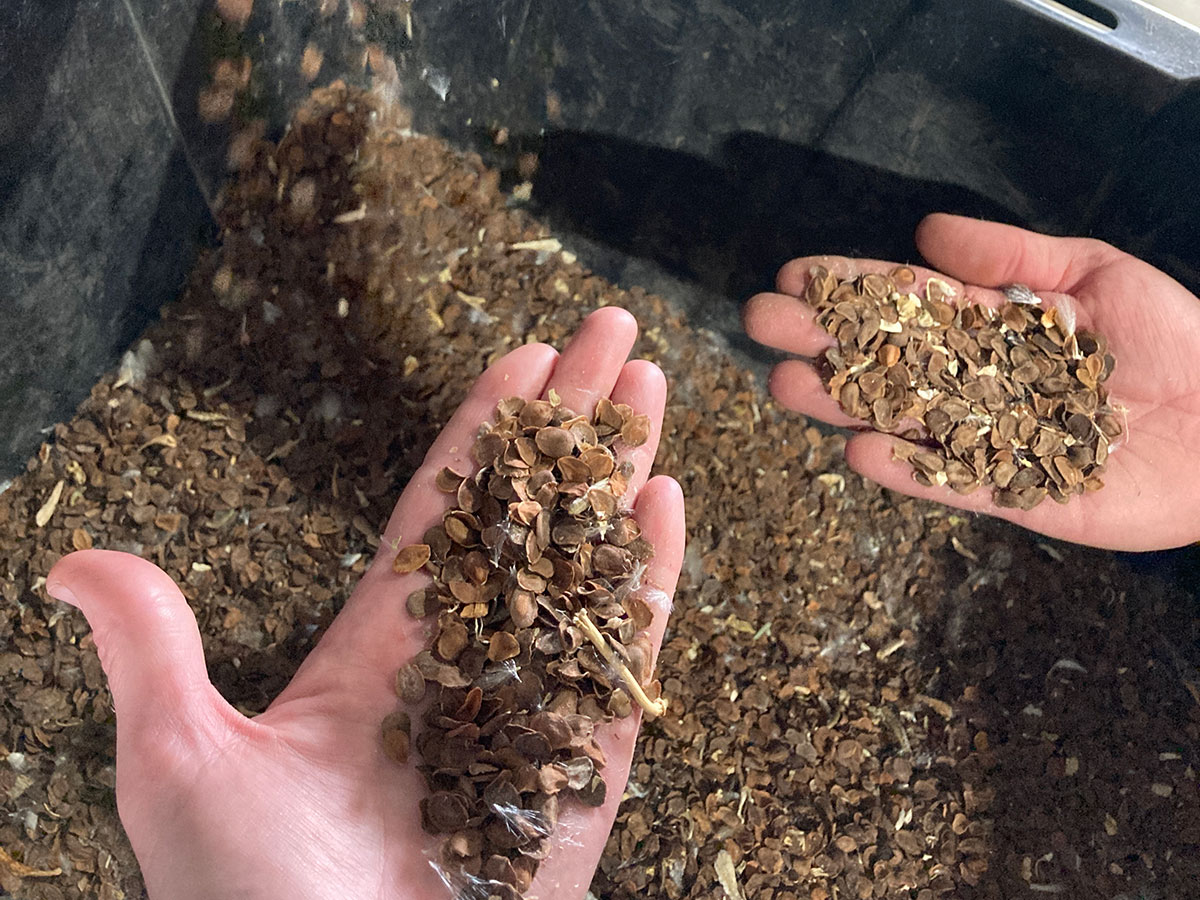This is part two of a two-part blog series about the Xerces Society’s work with the California Bureau of Land Management and Great Valley Seed Company to provide more early-season milkweed species in the early breeding zone for western monarchs in California. Part one was about why monarchs need early-season milkweeds.
Native milkweed species, particularly those that resprout earlier in the spring, are key host plants for western monarchs as they begin migrating inland after overwintering on or near the coast. Greater availability for seeds and transplants of these early season milkweeds is part of Xerces strategy for reducing threats to western monarchs. Joining this effort, we at Great Valley Seed Company partnered with Xerces to add early-season milkweed and other nectar plants species to our production.
Locating and collecting seed
The native seed supply chain starts with planning and then foundation seed collections, made ethically from healthy wild plant populations. The hot, dry summers in the Central Valley mean that local populations likely contain the ecotypes that will successfully grow and persist in habitat plantings. Landscape changes over past centuries have left much of the natural communities and hydrology of the San Joaquin altered, degraded, and fragmented. This is one of the main reasons for the need to restore areas and the demand for local ecotypes. In a catch 22, it also means that locating appropriate populations for foundation seed collections can be difficult.
For this project, we worked with local botanists, ecologists, land managers and Bureau of Land Management field office staff to identify locations and secure permission for seed collections of several early-season milkweed species: California milkweed (Asclepias californica), heartleaf milkweed (A. cordifolia), woolypod milkweed (A. eriocarpa), and desert milkweed (A. erosa). Seeds of mulefat (Baccharis salicifolia), which provides late season nectar for monarchs during fall migration, were collected to add this shrub to our production species.

Testing seed germination and weed control
We stored a portion of these seeds as backup and sent the other portion to a greenhouse grower for germination and propagation to transplant size. We included a simple trial of pre-germination treatments: with cold stratification and without. The results were mixed; the proportion of germinated seeds was higher with cold stratification for some species and ecotypes, but not for others.
In the second year of the project, we transplanted these plants into our seed production fields near Los Banos in Merced County. One challenge we worked through is which fields to grow in. These are perennial species and we keep them in the field for several years of seed production and harvest. Fitting them in among the dozens of other species on the farm is a puzzle that field mapping and long-term planning help to solve.
As with most farming operations, weed management is critical and a huge cost to our growing operation. Our primary foundation field was converted to organic production, limiting herbicide options to keep noxious weeds under control. The tradeoff was higher labor costs as we opted to hand weed a large part of these fields. At the end of that growing season, we had a modest seed harvest from these plots. As we write this, we are finishing our harvest and seed cleaning for this year.

Collaboration leads to improved growing techniques
We currently have narrowleaf milkweed available and continue to multiply the seed for future availability of California milkweed, woolypod milkweed, and desert milkweed from Kern and Merced counties. As we described our project timeline here, it takes several years to go from a plan to seeds that are available for customers and habitat projects. With enough lead time and planning, we can coordinate custom grow outs of seed. Alternatively, we can provide transplants, which can be more successful than seeds for certain project conditions or goals.

This project enabled us to improve our propagation and field techniques for difficult-to-grow milkweed through an iterative process, which is incredibly valuable for us as growers, and will ultimately benefit restoration practitioners and pollinators across the valley. This was our first experience growing these species and the records of what we did and what we learned will be shared in a forthcoming fact sheet published with Xerces.
Our collaboration with Xerces has helped us expand our capacity to provide seeds and plants of high-priority species for monarchs and other pollinators across the San Joaquin Valley. Great Valley Seed and our partners continue to pursue collaborations to expand availability of local ecotypes for targeted species.

About Great Valley Seed Company
Great Valley Seed is a native seed and plant provider in California, offering local ecotypes of the San Joaquin Valley (the southern part of the Central Valley). We supply seeds that are the backbone of sustainable and effective farming and conservation efforts on public and private lands. Our focus is to restore and expand habitats throughout Central California, with an emphasis on supporting monarchs and other pollinators. For questions regarding this project, please reach out to [email protected].
Additional Resources
The Xerces Society's milkweed finder is a national directory of milkweed seed and plant vendors.




